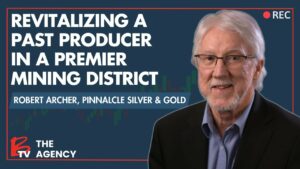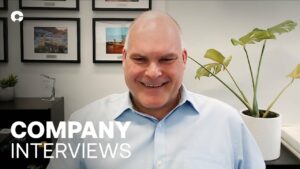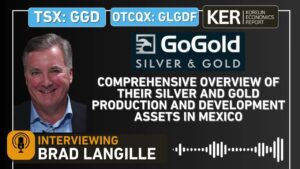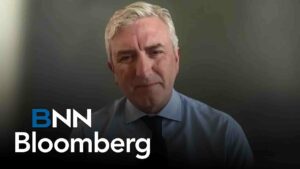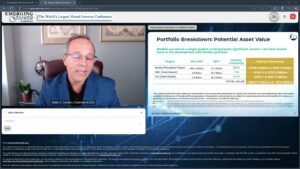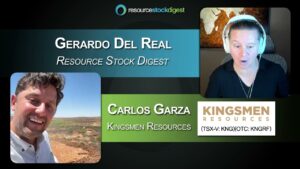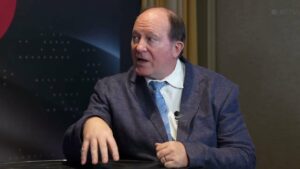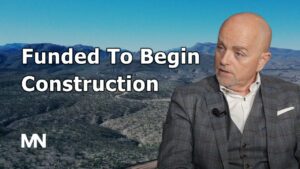Executives
Devin Sullivan – Senior Vice President
Rene J. Robichaud – Chief Executive Officer, President and Director
James R. Easter – Chief Financial Officer and Senior Vice President
Analysts
Cory Mitchell – D.A. Davidson & Co., Research Division
Cleve Rueckert – UBS Investment Bank, Research Division
Jonathan P. Braatz – Kansas City Capital Associates
Gerard J. Sweeney – Boenning and Scattergood, Inc., Research Division
Glenn Warren Primack – PEAK6 Investments, L.P.
John B. Rogers – D.A. Davidson & Co., Research Division
Layne Christensen (LAYN) Q3 2014 Earnings Call December 9, 2013 11:00 AM ET
Operator
Good day, ladies and gentlemen, and thank you for standing by. Welcome to the Layne Christensen Company Reports Fiscal Year 2014 Third Quarter Financial Results. [Operator Instructions] As a reminder, this conference is being recorded. I would now like to hand the conference over to Devin Sullivan from The Equity Group. Sir, please go ahead.
Devin Sullivan – Senior Vice PresidentThank you, Karen. And good morning, everyone, and thank you for joining us today for Layne Christensen’s Fiscal 2014 Third Quarter Conference Call. Our speakers for today will be Rene Robichaud, President and Chief Executive Officer of Layne Christensen; and Jim Easter, the company’s Chief Financial Officer.
Before we get started, I’d like to remind everyone that statements made during today’s call may contain forward-looking statements within the meaning of Section 27A of the Securities Act of 1933 and Section 21E of the Exchange Act of 1934. Such statements may include, but are not limited to, statements of plans and objectives; statements of future economic performance; and statements of assumptions underlying such statements; and statements of management’s intentions, hopes, beliefs, expectations or predictions of the future. Forward-looking statements can often be identified by use of forward-looking terminology, such as should, intended, continue, believe, may, hope, anticipate, goal, forecast, plan, estimate and similar words or phrases. Such statements are based on current expectations and are subject to risks, uncertainties and assumptions, including, but not limited to, the outcome of the ongoing internal investigation into, among other things, the legality under the FCPA and local laws of certain payments to agents and other third parties interacting with government officials in certain countries in Africa relating to the payment of taxes; the importing of equipment; and the employment of expatriates, including any government enforcement action, which could arise out of the matters under review or that the matters under review may have resulted in a higher dollar amount of payments or may have a greater financial or business impact than management currently anticipates; prevailing prices for various commodities; unanticipated slowdowns in the company’s major markets; the availability of credit; the risks and uncertainties normally incident to the construction industry; the impact of competition; the effectiveness of operational changes expected to increase efficiency and productivity; worldwide economic and political conditions and foreign currency fluctuations that may affect worldwide results of operations. Should one or more of these risks or uncertainties materialize or should underlying assumptions prove incorrect, actual results may vary materially and adversely from those anticipated, estimated or projected. These forward-looking statements are made as of the date of this filing, and the company assumes no obligation to update such forward-looking statements or to update the reasons why actual results could differ materially from those anticipated in such forward-looking statements.
With that said, I’d now like to turn the call over to Rene Robichaud. Rene, please go ahead.
Rene J. Robichaud – Chief Executive Officer, President and DirectorThanks, Devin, and good morning, everyone. Thank you, all, for joining us today. Our results for the third quarter were primarily impacted by losses at our Mineral Services and Geoconstruction divisions, as well as higher unallocated corporate expenses. Jim will provide some additional color on these items shortly.
As we’ve noted for the last several quarters, there are a number of positive developments at Layne that leave us optimistic about our future performance. Our end markets have changed dramatically from fiscal year 2013, and we expect that they will continue to evolve into next year and beyond. This demanding environment will likely see us face some of the same challenges in Q4 that we have addressed this year.
However, we believe that the performance at each of our divisions will be on the upswing next year. Our goal is to have each of our divisions operating profitably by the middle of calendar 2014. However, our biggest challenge is likely to be in our Mineral Services division. Through our One Layne business development initiatives, our divisions are collaborating in the pursuit of $1.3 billion of potential projects, primarily led by our Water Resources and Heavy Civil Divisions.
Our move to The Woodlands is now complete. The vibrancy of the business community and networking opportunities abound. The costs associated with this relocation, a significant drag in our earnings in fiscal 2014, will be completed this year. And our recent notes offering has provided us with a stable, committed base of capital to pursue opportunities both here and abroad.
Before turning things over to Jim, I’ll provide a brief overview and outlook for each of our businesses. For Water Resources, we maintained profitability of Water Resources for the second consecutive quarter. Although profits were down in Q3, this was due primarily to a decline in water supply revenues, the result of budget constraints in certain end markets.
Revenues at our other division segments, including Repair and Installation, were stable on a quarter-over-quarter basis, with continued margin improvement. Our Injection Well business has won important new work in Florida. But unfortunately, that work has been delayed to resolve a protest from a losing contractor. In the first 9 months of fiscal year ’14, higher-margin industrial work amounted to $36 million, making us confident we’ll surpass our goal of $50 million.
Revenues at our repair and installation business totaled $55 million through the first 9 months of fiscal ’14, representing a 2.3% decrease over the same period last year. Water Resources is leading 18 One Layne opportunities valued at roughly $640 million, among them, a significant opportunity with our Heavy Civil division at ExxonMobil for a water supply system involving our collector well technology. However, we’ve had a good — we’ve had good work delayed, and the problem job in the South East that suggests that our Q4 will not be profitable. But overall, our positive bidding opportunities lead us to believe that Water Resources is poised for a better fiscal 2015.
For Heavy Civil, after nearly 2 years of operating losses, Heavy Civil returned to profitability in Q3 as we discussed with you last quarter. This is a testament to the hard work of our people and the measured approach we are taking to work through our low-margin legacy backlog in a professional yet expeditious fashion, secure new projects with higher margins and reduce our cost structure. We’re continuing to diversify our Heavy Civil and Water Resources businesses away from the hard-bid municipal market and towards higher-margin, reduced competition and negotiated project work. Approximately 65% of our work booked in the last 12 months has been reduced competition work. This is better than our goal.
Heavy Civil’s backlog rose slightly by $6 million from the end of the second quarter. Heavy Civil is leading the discussion on 10 One Layne opportunities valued at $225 million. We expect roughly breakeven results at Heavy Civil for the balance of the year and a much better fiscal 2015.
At our Inliner division, its profits more than doubled from last year’s third quarter. This was the best Q3 profit performance that Inliner has ever produced. Higher profits were due in large part to cost-containment initiatives, improved mix of business and outstanding execution across our geographies. Revenues from Lining Products and Services were $44 million in Q3, up from $6 million from the immediately preceding second quarter. We expect that sales will remain strong.
Our fiberglass wet-out line was completed in November, and we have a trained installation crew ready. For our outlook, we believe that Inliner is on the path to generate its 8th consecutive year of record results and has continuing momentum going into next year.
For Geoconstruction. The $2.9 million loss before taxes at Geoconstruction narrowed significantly from the losses reported in Q1 and Q2 of this year. We’re not dragging on a loss, rather we’re referencing our belief that the bleeding had stopped and that this business will see improved performance in the current fourth quarter with a more pronounced improvement evident in the first quarter. During Q3, we announced nearly $83 million of new contracts in the United States and worldwide. Two of these projects are located in San Francisco. The first consists of specialized foundation work for the Transbay Tower, a new 61-story building located adjacent to the Transbay Transit Center. The second project is for the construction of foundations for 3 new underground subway stations for the Central Subway project. The third project is associated with the construction of a combined cycle power station at Punta del Tigre in Uruguay. We’re currently deploying our resources to these sites and expect to realize revenues from all of these projects in the first quarter of 2015 — of fiscal 2015.
The bidding environment at Geoconstruction is much more active, but the competition is intense, too, as European players have focused on the U.S. market due to much less demand at home.
Regarding our Energy Services. We began operations in the first quarter of this year, and we continue to develop a closed-loop water management solution to energy companies involved in hydraulic fracturing. Our initial focus is in the water-stressed Permian Basin of West Texas where we are providing water sourcing, transfer and soon, treatment. We have just received excellent overall results from our first commercial test of our mobile treatment technology, which has removed bacteria, total suspended solids and oil and grease exactly as we had expected. We believe that our cradle-to-cradle water management solution will be commercially proven and begin to increase in scale in the next 12 months.
We now have 8 master services agreements in place with large E&P companies towards our goal of 20 to 25 such agreements, and we are in negotiations with several others.
Regarding our Mineral Services business. This remains our most challenged business as the continuing slowdown in global mining exploration activity is expected to continue at least through the end of this fiscal year and most likely into next year. As we noted in the announcement, a number of factors continue to impact our results at Mineral Services, including commodity price fluctuations, regulatory actions, the imposition of additional taxes and labor issues. The $2.3 million loss before taxes at our affiliates, primarily consisted of separation expenses related to the labor force in Chile, following layoffs by a major mining customer. We expect our affiliates to return to profitability in Q4 following the signing of a new long-term contract. These Q4 profits are likely to be offset, however, by losses at our wholly-owned business. We will continue to take whatever steps are necessary to maximize profitability while the industry recovers.
Overall, rig utilization in the third quarter was approximately 42%. Our definition of utilization is a rigorous one where the rig must be actively used, and not just committed. We’ve also started up modestly again in West Africa, following the wet season. That said, achieving profitability throughout Africa is our biggest challenge.
Mineral Services is continuing to work with our other Layne divisions to pursue and secure new project work under One Layne. For example, we are bidding on a major water management project in Mexico. Before our One Layne initiative, we never engaged our mining clients regarding water management and soil stabilization. We feel that our suite of technologies will help differentiate us from our competition.
I’ll now turn the call over to Jim Easter, who will review our third quarter results. Jim?
James R. Easter – Chief Financial Officer and Senior Vice PresidentThanks, Rene, and thanks to each of you for participating in today’s call. We expect to file our Q with the SEC later this afternoon.
We reported a net loss from continuing operations attributable to Layne for the third quarter of $15.8 million, or $0.80 per share, compared to net income from continuing ops attributable to Layne of $8.5 million or $0.43 per share in last year’s third quarter. The loss this quarter was primarily attributable to a loss before taxes at Mineral Services of $9.7 million; comprised of operating losses, including affiliates of approximately $2.3 million; and an accrual increase of $5.6 million associated with the ongoing FCPA investigation. We increased the reserve based on the results of our internal investigation and an analysis of the resolution of recent and similar FCPA cases. As such we now estimate the potential settlement range for resolving these matters at $10.4 million to $16 million, up from our previous reserve of $4.8 million, which was booked in May of 2013.
Second, a $3.5 million increase in unallocated corporate expenses, consisting primarily of our headquarters consolidation costs and higher legal and selling expenses. Through the first 9 months of fiscal 2014, we have incurred approximately $8.8 million of headquarter relocation costs, and we expect to record an additional expense of about $2.5 million in Q4. Finally, there was a $2.9 million loss before tax at Geo. In the aggregate, these losses and expenses totaled $16.1 million or $0.82 per share.
Our revenues declined 23% to $216.5 million in the third quarter of fiscal ’14 from $281 million in the third quarter of fiscal ’13, due to lower revenues at all segments, except for Inliner. For the quarter, revenues at Inliner increased 36.4% to $43.8 million from $32.1 million in the third quarter of fiscal ’13.
Cost of revenues declined 21.1% to $176.9 million, or 81.7% of revenues, from $224.4 million or 79.8% of revenues for the same period last year. The increase in the cost as a percentage of revenues for the fiscal 2014 third quarter is a result of margin pressure across most divisions, especially those exposed to the municipal sector.
SG&A expenses increased 3.7% to $39.7 million from $38.3 million in last year’s third quarter. Lower compensation and selling expenses were partially offset by higher costs associated with the headquarters move. We expect SG&A expenses to stabilize and costs associated with the relocation would be lower moving forward.
Depreciation and amortization declined $15.2 million in the current third quarter from $15.7 million in last year’s third quarter, due to the disposition of some nonessential assets, including the sale of our SolmeteX business unit earlier in the year.
We reported a loss in equity and earnings of affiliates of approximately $2.3 million in third quarter as compared to earnings of $4.9 million in the same period last year, primarily due to the global decline in Mineral Exploration, as well as severance costs recorded by the affiliates as they significantly downsized their operation to respond to the change in industry conditions.
Interest expense increased to $2 million for the third quarter of fiscal 2014 from $1.6 million in the third quarter of 2013, reflecting the write off of $400,000 of deferred financing costs related to reduction of revolver capacity in connection with the September 2013 amendment.
Long-term debt, less current maturities, at the end of the third quarter was $102.7 million, up slightly from $101 million in the second quarter. We recorded an income tax benefit of $3.9 million in the third quarter of fiscal 2014 compared to an income tax benefit of $1.2 million for the same period last year. Our cash position at October 31, 2013 was $29 million, up from $23.3 million at the end of the second quarter of fiscal ’14. We had working capital of $111.2 million and equity of $304.3 million or $15.24 a share.
Before turning things back to Rene, I want to make a couple of remarks about our convertible notes offering. In early November, we announced our intention to sell $75 million of aggregate principal amounts of senior convertible notes due 2015 — due November 15, 2018. We completed a $110 million offering at annual interest rate of 4.25%. On December 4, the underwriter exercised the overallotment option, which resulted in the sale of an additional of 15 million of notes. Total net proceeds of roughly $120 million were used to repay in full the amounts outstanding under our revolving credit facility, with the excess earmarked for working capital and general corporate purposes. While this transaction will have little impact on our interest expense, it provides a stable funding source and the necessary flexibility to implement our growth objectives.
I’ll now turn the call back to Rene.
Rene J. Robichaud – Chief Executive Officer, President and DirectorThanks, Jim, and thank all of you for joining us today. We remain confident in the outlook for our One Layne solution strategy. And I thank you for your continued interest in Layne.
With that, I’ll turn the call over to the operator for questions.
Question-and-Answer Session
Operator
[Operator Instructions] Our first question comes from the line of Cory Mitchell from D.A. Davidson.
Cory Mitchell – D.A. Davidson & Co., Research DivisionRene, we’ve been seeing increasing losses in the Energy Services business since you guys have established that business. And I was — I’m just curious to hear some more detail on what’s causing the losses? Is it more one-time costs associated with startup or are you guys — have any negative margin works there or…?
Rene J. Robichaud – Chief Executive Officer, President and DirectorNow the work that we get is positive margin. We just don’t get enough of it. Right now, we’ve spent a lot of money building a good team. Our water sourcing capability has been in place for the full year. Our water transfer capability, which is really a new technology that’s very capable, leak-free technology, only really started up in business in June. And our water treatment technology is right now in the midst of getting lab results back, final lab results back, on our first commercial field test within oil and gas company. The preliminary results on those field tests are very encouraging. And we, for the first time, next month, we’ll be able to offer a complete solution for getting water, transporting water, storing water and treating water, all in a environmentally-sensitive way and cost competitively. But that said, our sales have not really picked up as much as our current fixed costs are needed to be in a position to offer these services.
James R. Easter – Chief Financial Officer and Senior Vice PresidentCory, I just might add one thing that — what we really need is more master services agreements so that we’ll be able to operate that business in direct continuation, because the worst thing that we have is the guys are out — the crews are out for 5 days then they’re back in the yard for 3 days, and they’re out for 7 days, and then they’re back for 2, and then they’re out for 7. That sort of thing just makes it very inefficient. If we could get more MSAs in place so that the guys will stay in the field for a longer and direct continuation, that should give us much greater efficiency. And then obviously, in Q4, just in today’s Upstream Magazine, there was an article about the bad weather and the ice storms we’re having out there. It’s always a tough environment in West Texas this time of year, so we need to keep that in mind for the — for the next quarter.
Cory Mitchell – D.A. Davidson & Co., Research DivisionOkay, Jim, what revenue range or revenue levels do you guys need to see that — to breakeven on that business?
Rene J. Robichaud – Chief Executive Officer, President and DirectorAbout [ph] $5 million a quarter. And we’re still a ways from that with only 8 MSAs. We expect to get 1 to 2 MSAs per month over the course of the next 6 to 12 months and begin a process of keeping our utilization up.
Cory Mitchell – D.A. Davidson & Co., Research DivisionOkay. And then going on to Inliner, I mean, 13% margin there is the highest I’ve seen since you guys have started really reporting that segment. I mean, was there any one-time gains in there? Or how should we start thinking about the profitability of that business going into fiscal year ’15?
Rene J. Robichaud – Chief Executive Officer, President and DirectorNo. no, that’s all operating excellence.
Cory Mitchell – D.A. Davidson & Co., Research DivisionOkay. And then Geoconstruction backlog, is pricing on that moving up?
Rene J. Robichaud – Chief Executive Officer, President and DirectorNo, pricing on that is tight. In order to win those projects, we have to give up a handful of percentage points from what we might have wanted. But we’re delighted with the work. It will be profitable work, and it’ll really start kicking in, in the first quarter.
Operator
And our next question comes from the line of Steven Fisher from UBS.
Cleve Rueckert – UBS Investment Bank, Research DivisionThis is Cleve Rueckert on for Steve Fisher. I’m just wondering if you have any more visibility you can provide to gain better clarity on when you expect the mining business to bottom.
James R. Easter – Chief Financial Officer and Senior Vice PresidentWe were just talking about that before the call started. Our crystal ball is a little murky like everyone else’s in this industry. Just when we think that it can’t get much worse, it tends to get a little worse. But at least in the last quarter, things have moved up slightly from a rig utilization perspective, but we are faced — or the entire industry is faced with the unique situation, that is, we have fairly healthy commodity prices, yet poor utilization.
Rene J. Robichaud – Chief Executive Officer, President and DirectorThe 2 commodities that affect us the most are copper and gold. Gold’s decline from $1,800, $1,900 to $1,200, $1,300 has been about as sharp a decline as the industry you’ve seen in 30 years, so that’s caught a lot of people off guard. It makes it harder to forecast going out next year. We expect that we have taken the bulk of our one-time cost in downsizing around the world. And so next year, we won’t be taking those downsizing costs. For that, we’re thankful. So our cost structure will be much more efficient. And I think with any uptick in utilization, we’ll start showing profits, and that’s certainly our goal. And the copper — the price of copper will really depend on China. China consumes about 40% of the world’s copper. And if China continues to grow as expected, we’ll be all right; if China slows down, then we’ll probably have more price declines.
Cleve Rueckert – UBS Investment Bank, Research DivisionIn terms of the Geoconstruction orders, can you talk about the cadence throughout the quarter? Was there a pickup in momentum there and can we expect that to continue?
Rene J. Robichaud – Chief Executive Officer, President and DirectorWell, we are — we have a really great problem at Geo today, which is all the work is coming in fast and furious. But it is a problem. We’re mobilizing in San Francisco. We’re mobilizing in Hawaii. We’re mobilizing in Uruguay. We’re mobilizing in Brazil. And it’s all happening at the same time. We’ve got the players to put that in place, but we’re still hiring today, which is — start to change from only 3 months ago. And we’re still bidding on some great jobs coming that we sure hope to win, and we think we’ve got a very good chance of winning that. Still the — the Geoconstruction has always been a lumpy business. This year, it’s probably the worst — well it is the worst year we’ve ever had at Geoconstruction in, say, 17 years, since we’ve been in this business, and we expect that next year we could be almost, if not completely, sold out from a utilization perspective.
Cleve Rueckert – UBS Investment Bank, Research DivisionOkay. And then just going forward, what’s the good run rate to expect on unallocated corporate expense?
Rene J. Robichaud – Chief Executive Officer, President and DirectorWell, I am going to say it’s an area of $32 million, $33 million, but…
James R. Easter – Chief Financial Officer and Senior Vice PresidentYes, I was going to say right at $30 million because we did have some odd, non-recurring things with the move and a few other odds and ends. But, I think, for modeling purposes, $30 million would be a pretty good number.
Operator
And our next question comes from the line of Jon Braatz from Kansas City Capital.
Jonathan P. Braatz – Kansas City Capital AssociatesA couple of questions. Rene, your previous revenue goal for energy was annual run rate of $20 million by the end of this year. Obviously, it doesn’t look like it’s going to happen. But would you be — do you think you can get to that run rate by the end of next year? How do you look at the revenue opportunity over the next 12 months?
Rene J. Robichaud – Chief Executive Officer, President and DirectorYes. We have already in place the team on the sourcing side and the transfer side to get to a $20 million run rate. But we’ve only had the transfer in place since June and what we’ve found is a couple of things. People have said “your transfer technology is the best we’ve ever seen, but would you meet the price that the people down the road are going to give you?” And we’ve had and created some pricing pressure. So we did not want to create a price war. We do not want to engage in that. We’re bringing a technology that is very different from aluminum piping, very different from the 30-foot sticks of PVC piping, very different from trucking water around, and so we don’t want to engage in that sort of price war. That said, that’s part of the reason why we’re not always busy there. We think the real tip of the spear from a solution standpoint is our mobile treatment technology. And this is a chemical-free membrane technology that allows the removal of 99.999% of bacteria on all total suspended solids and virtually all oil and grease. So leaving the client with a perfectly cleaned brine that can be reused.
Jonathan P. Braatz – Kansas City Capital AssociatesSo I guess going back to the question, Rene, do you think you can get to that run rate by next year?
Rene J. Robichaud – Chief Executive Officer, President and DirectorWe are certainly capable, again, there. We’re certainly planning to get there. We’ve got the sales force up with brown bag lunches teaching people about the difference of what we do versus the other people who are in the sourcing and transfer business. We think the real penetration of our Treatment business will allow us to get to the $20 million run rate certainly by the end of next year, but hopefully, sooner.
Jonathan P. Braatz – Kansas City Capital AssociatesOkay, okay. Secondly on your wholly-owned mineral operations, I think you made reference to some things that you can do to reduce some of the costs and expenses and sort of get down to the rights — and rightsize the business for the revenue environment. Is there enough you can do such that if, let’s say, the status quo was main [ph] that you could reach a breakeven standpoint in your wholly-owned operation, or do you think at these levels of revenue, we’re still going to be at a loss?
Rene J. Robichaud – Chief Executive Officer, President and DirectorNo, no. We believe we can break even in our wholly-owned business even at low utilization rates with our lower cost structure. But, again, we still are working with our clients on what they want to spend for next year. Based on all the work we currently have, based on a rollover of that work in our new cost structure, we think we can be profitable during the course of next year. We just have to make sure that our clients still continue to be uncertain on how much money they’re going to spend.
Jonathan P. Braatz – Kansas City Capital AssociatesOkay. And then when you look at, let’s say, the next year in its entirety, obviously, you won’t have the relocation expenses and so on. Do you think…
Rene J. Robichaud – Chief Executive Officer, President and DirectorNever again will we relocate headquarters.
Jonathan P. Braatz – Kansas City Capital AssociatesYou don’t want to relocate back to Kansas City?
Rene J. Robichaud – Chief Executive Officer, President and DirectorThat’s not going to happen, so you can book that.
Jonathan P. Braatz – Kansas City Capital AssociatesOkay. Do you — absent those costs and with a little bit of better market conditions, would you foresee profitability in the second half of next year?
Rene J. Robichaud – Chief Executive Officer, President and DirectorOh, yes, we can see that. Subject to what we’ve said about Mineral Exploration before, but we think all of our businesses are headed in the right direction, certainly compared to what we’ve just seen, and that’s encouraging to us.
Operator
And our next question comes from the line of Gerard Sweeney from Boenning and Scattergood.
Gerard J. Sweeney – Boenning and Scattergood, Inc., Research DivisionA question on the MinEx side. I know you touched upon it earlier. But this is generally the time of year when you’re working on some contracts, people looking at CapEx budgets for calendar 2014. The Mineral Exploration business that you are in mostly — I think you’re at sort of the front end of spending in terms of — you have refill some of the prove — the probable reserves and most of the miners have been cash — probably more in cash flow-driven businesses or just mining ores to get them out of the ground to keep cash flow growing. I mean, what are you going to look for, for some green shoots? I mean we’re getting 2014 looks to be a big question mark, but looking at 2015, what are you looking at for some signs that the market’s going to be turning?
Rene J. Robichaud – Chief Executive Officer, President and DirectorThe biggest thing would be the price of gold moving from $1,200 to $1,300 to $1,400 as opposed to what a few analysts that think that it’ll go from $1,200 and test $1,000 before moving up again. That sort of uncertainty in the marketplace has a lot of our clients unsure of how much money they’re going to spend. As their level of comfort increases, we can expect calls to increase our rig count and take rigs out of idle mode. But until we see that, we have to be pretty conservative. We could not, we did not expect our mining business to come down this hard when we went into this year. And so shame on us. This year has turned down harder than the year 2009, when banks weren’t lending to banks and dogs were sleeping with cats. And it’s really unusual to see that with the price of copper at $3.20 to $3.25, so this is the hardest thing for us to predict. We really don’t want to go out on a limb on where it’ll go. But we can assure you that we are and have massively changed our cost structure to make sure we stay profitable at current business levels. Now that may not happen in the fourth quarter, and the reason for our wholly-owned business — we think it’ll happen for our affiliates because their business fourth quarter is different than ours. But in a lot of places, when budgets are this uncertain, people take a lot of time off for around Christmas; and in some countries, they may not come back to work until early February.
Gerard J. Sweeney – Boenning and Scattergood, Inc., Research DivisionNo, I understand that. I was just curious. I mean, obviously, copper above, what, it’s $3.15 a pound, $3.20; gold has certainly come down. Some of miners, they can’t stay in cash flow mode forever. I mean, at some point they have to start maybe inching out using some more services, book — doing some more exploration work. But from our perspective, we’ll continue to watch gold. And you — are you in the midst of doing some contract negotiations right now?
Rene J. Robichaud – Chief Executive Officer, President and DirectorOh, yes, but they’re not nearly as vigorous as prior years. I would say, clients are taking more time to figure on their budgets, and our estimate is that they will be flexible as well to increase those budgets, but only with greater certainty on the regulatory front, the tax front, the labor issue and the commodity price issue.
Gerard J. Sweeney – Boenning and Scattergood, Inc., Research DivisionOkay, got it. And then shifting gears a little bit to One Layne. You’ve thrown out that $1.3 billion in project being tracked for a while now. I think you’ve given a little bit more granularity on some of the divisions or subdivisions at a number of projects that they’re tracking in the value. I just want to use, maybe, that Mexico project as an example for a question. But how difficult will it be for Layne to make this shift over into the — I think, it would be in Mineral Services, the water sourcing side in that Mexico project? And how large of a project could that be, just to get an idea of the transition and the opportunity, and how this will develop. And to be somewhat frank, the viability of this really starting to gain some steam.
Rene J. Robichaud – Chief Executive Officer, President and DirectorThat’s a very large project. We are 1 of 3 people who have bid on that project for one of our major mining clients in Mexico. It’s a water supply project. So I hesitate to give you a price until the client’s more certain about this. I have to tell you that the Mexican government has put a new mining tax in, which has put everybody thinking about, “Holy Cow, what does that mean for internal rates of return?” So, I’d rather not talk a lot about any given project. That one is exciting for us because it would be a perfect job for us to help one of our clients with a major water supply. But I can tell you in another country of the world, and I don’t even want to name it, because I don’t want anybody else going after it, we’re looking for — at another major water management project for another super major mining house. And this is a dewatering project, not a water supply project. So what Layne never did about a year ago was talk with our major mining companies of how we could stabilize their surface mine walls, stabilize their underground mineshafts, dewater in their mines and provide massive amounts of clean water for drilling their mines. And all of those topics, all of those discussions that we’re having make us a much more important services partner than we’ve ever been; and for that, we’re — we think that gives us a unique mineral services position.
Operator
Our next question comes from the line of Glenn Primack from PEAK6.
Glenn Warren Primack – PEAK6 Investments, L.P.Do you have any One Layne financial targets or goals other than the — tracking the projects?
Rene J. Robichaud – Chief Executive Officer, President and DirectorYes, we have a long-term goal that it should raise our overall sales by 10% to 20%, so say $150 million. These should have a 10% overall construction water management margins. That’s $15 million of operating income, which would match the most that we’ve ever gotten from our divisions, including Heavy Civil, Water Resources, Inliner and our wholly-owned Geo operations. So it’s like adding — to us, a seventh division without really adding any more resources. And it’s higher margin than the other divisions, individually. And it’s much more value-added than the hard-bid muni market, which has been a horrible market for us, but it is our legacy.
Glenn Warren Primack – PEAK6 Investments, L.P.Okay. So culturally, you have things in such a way that the folks in the field understand the opportunity and they’re out there getting after it and working a couple of years?
Rene J. Robichaud – Chief Executive Officer, President and DirectorWell, that — we’ve been at that for 18 months, and it doesn’t just happen that all of a sudden 1 division knows how to sell to its best client, other division capabilities. We’ve had to bring to bring in a lot of experts and train everybody to stop selling their services that are on their shelf uniquely, start listening to what the problems that our clients have and bring the best of what Layne has to bear. You’d think that this was easy and that we should have been doing this over the last generation, but we only have really gotten some traction. And in some ways, I tell our people that it’s a little bit like getting into the wine business. We have prepared our field, we’ve planted our vineyards, the grapes are growing, and we’re fertilizing them but we’ve got to age them, too. These are massive projects that don’t just get turned on. But in time, we believe we’ll have a rolling group of One Layne projects coming on and coming off, and it’ll be a very significant part of who we are.
Glenn Warren Primack – PEAK6 Investments, L.P.Okay. And, Jim, you’ve been there since May of this year?
James R. Easter – Chief Financial Officer and Senior Vice PresidentYes, 6 months now, give or take.
Glenn Warren Primack – PEAK6 Investments, L.P.Okay. And the book value is now around 15 and change from, I think, like 21. By, like, your 1-year anniversary, because the money kind of furnace is fixed, depending on what happens with mining customers. So that’s kind of safe to assume?
James R. Easter – Chief Financial Officer and Senior Vice PresidentYes, I think that’s probably a valid statement.
Glenn Warren Primack – PEAK6 Investments, L.P.Okay. And then lastly, on the Energy Service, Marv [ph], it seems like you’ve got a really slick solution that — but you’re dealing with customers there that — it takes a while for them to jump on board anything new?
Rene J. Robichaud – Chief Executive Officer, President and DirectorWell, that’s true. And it’s not like our competitors are rolling over and saying, “Oh, you’re right, just go to Layne’s better technology,” because they’re not. They don’t want to give up on any of their customers and I don’t blame our customers. But I can tell you that I’m very proud of what we’ve developed operationally on sourcing as well as transfer. I believe we’re going to be very proud of our treatment capabilities as well, penetrating into a very competitive market is more of a challenge than I had hoped but we are making good progress and we will continue to make good progress.
Glenn Warren Primack – PEAK6 Investments, L.P.Yes. That seems like it’s the most challenging part. You can have the best solution, but that’s just a tough — a lot of those guys just — it takes a while for them to go through your solution, or any solution, that’s different from what they already have deployed and then make the switch.
Rene J. Robichaud – Chief Executive Officer, President and DirectorThat’s very true. You have to prove yourself time and time and time again. We’re the new kids on the block. We can go to virtually any major community in the United States and the goal [ph], well, here’s Layne, we get it. We go to West Texas, and they go Layne, Layne, let me see now. Okay.
Glenn Warren Primack – PEAK6 Investments, L.P.Okay. And did you do like an NPV at all on this, just like at what point it turns positive?
Rene J. Robichaud – Chief Executive Officer, President and DirectorThat’s kind of like doing a net present value on a research and development project. But operationally, we can and have the people and the tools to break even at market pricing, if we just, as Jim had said, get to a direct continuation moment.
James R. Easter – Chief Financial Officer and Senior Vice PresidentYes, our problem has not been margins. The margins have been very good. When we work, our community…
Glenn Warren Primack – PEAK6 Investments, L.P.No, I understand that. I mean, the reason I asked the question on the NPV thing is because, to somebody else who already has like maybe a lot stronger relationships with those big customers, it’d be a layup for them to like plug this thing in. For you, it’s going to take longer than maybe, originally thought just because those decision-makers take their time on anything that’s different from what they’ve deployed in the field beforehand.
James R. Easter – Chief Financial Officer and Senior Vice PresidentYes.
Rene J. Robichaud – Chief Executive Officer, President and DirectorThat’s true.
Glenn Warren Primack – PEAK6 Investments, L.P.Are you guys buying stock? Not like, personally, just because it seems like, if I was — you have a better view of the One Layne than I do. But if you can get to some of these numbers in a few years, price-to-book or price-to-sales relative to other industrial companies, it seemed…
Rene J. Robichaud – Chief Executive Officer, President and DirectorWell, believe me. And I put a lot of my own money in and the board has kindly incented me and our senior management team with equity upside. We get it. We’re in your camp. We plan on maximizing the value of Layne, but doing so with an eye towards the long term.
Operator
[Operator Instructions] Our next question comes from the line of John Rogers from D.A. Davidson.
John B. Rogers – D.A. Davidson & Co., Research DivisionI’m just wondering, Rene, after you — after the couple of years and the restructuring and getting all the operations together, and I know what you said about them all being hopefully profitable by the end of next year. Are there any segments or assets that you’re looking at to divest?
Rene J. Robichaud – Chief Executive Officer, President and DirectorWe are not.
John B. Rogers – D.A. Davidson & Co., Research DivisionOkay. And at this point, all of the pieces make sense for the — and as part of the long-term plan?
Rene J. Robichaud – Chief Executive Officer, President and DirectorThey do. It’s some more than others. To have a strategy that holds together, you want to make sure your divisions support each other on maximizing revenues. And we give you pretty good transparency on what businesses are involved in the One Layne aspect. But also in controlling costs and making sure that our capabilities actually add value to our mining clients, our industrial clients, the municipalities that have let us get into design, build and alternative delivery, and we have a very clear view on what divisions can do what for each of those major customer segments.
Operator
And I have no further questions at this time. I would like to turn the conference back to management for any concluding remarks.
Rene J. Robichaud – Chief Executive Officer, President and DirectorWell, we thank you very much for your time this morning and your support of Layne. We look forward to talking to you at the end of next quarter.
Operator
Ladies and gentlemen, thank you for your participation in today’s conference. This does conclude the program. And you may now disconnect. Everyone, have a good day.
Rene J. Robichaud – Chief Executive Officer, President and DirectorThank you.
